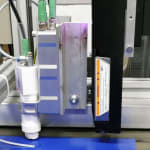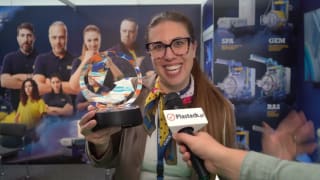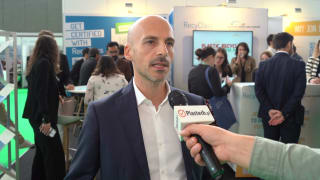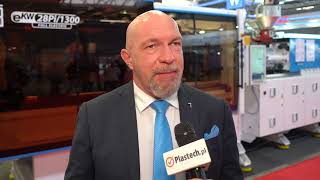
The reliable and abrasion-resistant printing of high-performance plastics poses a challenge for all areas of industry. A typical example of this is the printing of PTFE (polytetrafluoroethylene) in inkjet printing. Prior surface treatment with cold atmospheric pressure plasma enables high-quality and reliable marking with as little effort as possible.
Regensburg. In many areas of industrial printing, cold atmospheric pressure plasma is used to print on plastics that are difficult to print on due to their surface properties. Plasma treatment greatly improves the adhesion of the printing inks to the surface and thus increases the print quality. The compact PiezoBrush PZ3-i plasma unit or the PiezoBrush PZ3 hand-held plasma unit for manual pre-treatment of small batches makes integration into existing production lines particularly easy.
Marking PTFE with data matrix codes
While data matrix codes were previously used for permanent direct marking by laser or embossing, they are now increasingly being used as printed code images. The code must be both easy to read and abrasion-resistant. A leading company in the development, production and sale of tool solutions for surface processing uses the PiezoBrush PZ3-i in conjunction with the Keyence MK-G1000SA continuous inkjet printer to mark PTFE fabrics reliably and effectively.
PTFE is one of the most important fluoroplastics due to its good non-stick properties and extreme resistance to heat and chemicals. However, PTFE has a surface energy of less than 30 mN/m without prior plasma treatment. Plasma treatment with the PiezoBrush PZ3-i can increase the surface energy to at least 38 mN/m, which makes all the difference. Without this increase in surface energy, it is not possible to bond the printer ink. The printed image appears faded, is not abrasion-resistant and the data matrix codes used cannot be read.
By integrating the cold plasma treatment into the process sequence, good legibility of the printed data matrix code and its fatigue strength can be guaranteed even under difficult conditions such as friction and temperature. Traceability and reliable sequences in the subsequent process steps are thus ensured by pre-treating with the PiezoBrush PZ3-i in the marking print.
The plasma treatment of the surface cleans the surfaces to be printed of the smallest organic impurities and leads to an additional molecular modification of the surface topography. As a result, plasma functionalization at atmospheric pressure makes it possible to avoid expensive vacuum systems or toxic wet chemistry, which has a positive effect on costs, safety and the environment.


